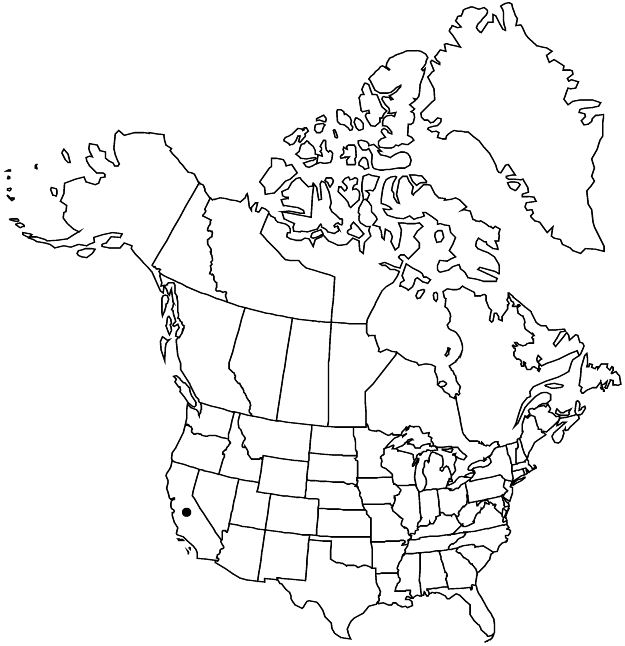Ceanothus hearstiorum
Four Seasons 2(1): 4. 1966.
Shrubs, evergreen, 0.1–0.3 m, matlike or moundlike. Stems spreading or prostrate, not rooting at nodes, some flowering branches ascending; branchlets green to reddish brown, not thorn-tipped, round or slightly angled in cross section, flexible, densely puberulent. Leaves: petiole 1–2 mm; blade flat to cupped, linear, oblong, or oblong-obovate, 8–20 × 2–10 mm, base cuneate to obtuse, margins entire or obscurely glandular-denticulate, weakly revolute, glands 23–31, apex truncate or retuse, abaxial surface green, densely tomentulose, adaxial surface dark green, glandular-papillate and sometimes villosulous; pinnately veined, veins ± furrowed. Inflorescences terminal or axillary, umbel-like or racemelike, 1–5 cm. Flowers: sepals, petals, and nectary deep blue. Capsules 4–5 mm wide, not lobed to weakly lobed; valves smooth, not crested.
Phenology: Flowering Mar–Apr.
Habitat: Consolidated alluvial or serpentine soils, maritime chaparral, coastal prairies.
Elevation: 20–200 m.
Discussion
Ceanothus hearstiorum occurs in a small area of coastal bluffs in northern San Luis Obispo County, growing in close proximity to another local endemic, C. maritimus (subg. Cerastes).
Selected References
None.
